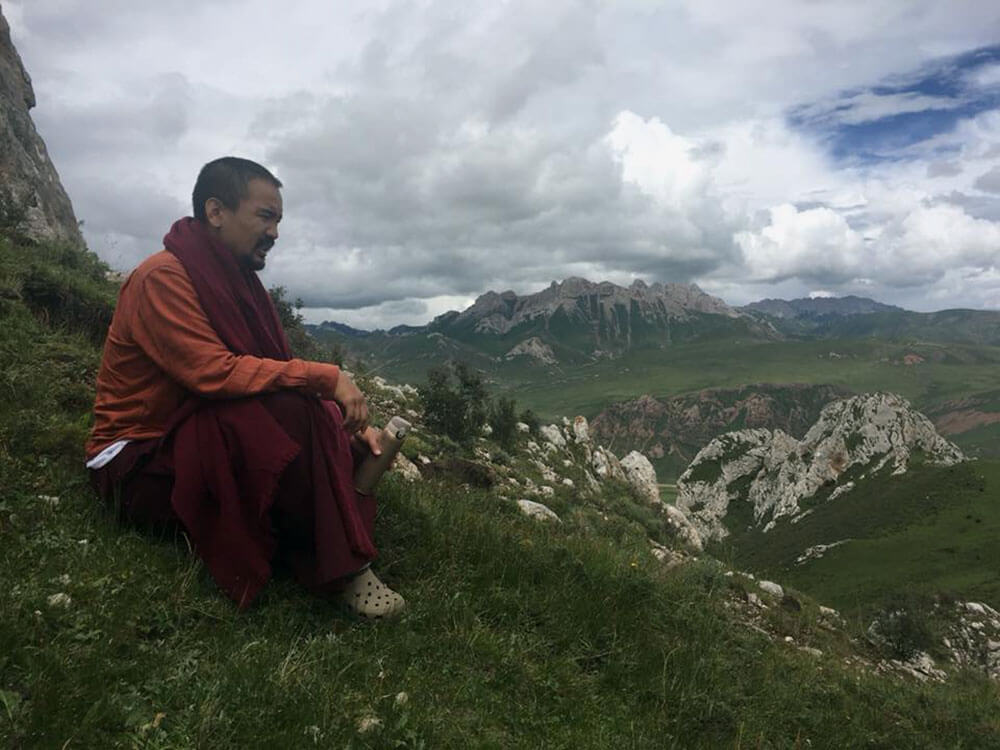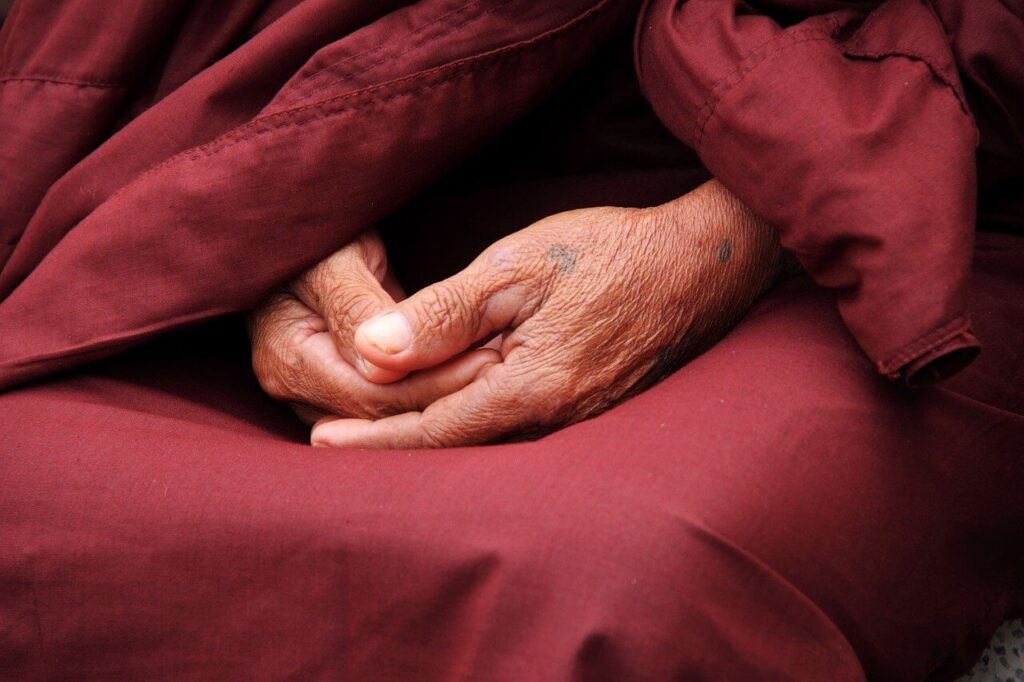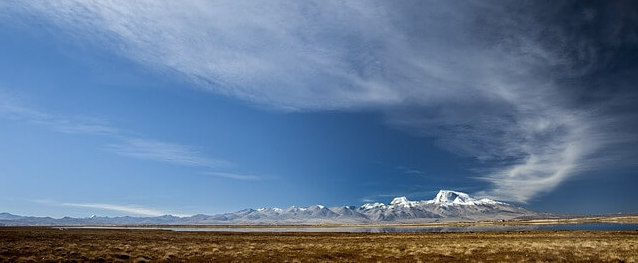The Wandering Yogi (V) – When I met the two masters
When I think back, I reflect on what I was doing: wasn’t this what it meant for me to go away: to wander and practice? My body was wandering, my mind was wandering, I felt the world, my mind and myself empty; I was really wandering.
Later I came to a village in Sichuan Tibetan Autonomous Prefecture and learned from the locals that not far away was the legendary Nyoshul Jonpalung Monastery. Nyoshul Jonpalung is a Nyingma monastery in Kham in the Dzin Valley of Tromtar, in present-day Pelyul county in Sichuan province. The abbot, present-day Sangye Tsering Rinpoche, of whom I have heard before, in his previous incarnation was Khenpo Ngawang Palzang (1879-1941). This virtuous practitioner was the guru of one of the most prestigious masters of tantric practice today, His Holiness Kyabje Chatral Chatral Sangye Dorje Rinpoche. I was very curious to know what kind of person would be the guru of such a guru.
So I decided to make a pilgrimage to Nyoshul Monastery and meet Sangye Tsering Rinpoche. It should be noted that generally, most monasteries are built in places where people can gather, but in this case Nyoshul Monastery was on a hill in the deepest part of the forest. It is truly a place of meditation. On the day of my visit to Nyoshul Monastery, Sangye Tsering Rinpoche was on retreat, so I was not able to meet him. I therefore, decided to visit him again when he had finished his retreat.
While in the area, I remembered that when I was young, I had heard from my family that we had a cousin who practised in Nyoshul. It was said that he had been in retreat for more than 20 years and had studied with masters from all over. I asked the lamas at the temple if they had heard of the Yushu practitioner and if they knew his name. After asking many lamas, none had heard of my relative. Finally, an old lama said that he only knew of one practitioner from Qinghai in this area who lived in the mountains. So the old lama very kindly took me to this practitioner’s house on the mountain. I had never seen my relative personally, but I had seen his picture. When we arrived at the mountain house, the practitioner who opened the door had the same face I had once seen in the photo. We talked for a while before we realised that we were the relatives in question ourselves. Over the years, I had heard many things about him from my family, and he also said he had heard about me. Although it was the first time we had met, there was a strong sense of familiarity between us. When he heard that I was doing wandering retreats he invited me to stay with him in his simple wooden hut on the hill. We talked a lot about the recent history of our loved ones and some interesting stories from the past.
The next morning I got up early and looked for a place in the surroundings of my residence to start meditating. My cousin also introduced me to some of the practices I was familiar with, such as the Thodgyal, and the Mahamudra practice of the Kagyu school of Tibetan Buddhism.
I had heard from my relatives that the area where my cousin lived was sparsely populated and that only people who had been in retreat for a long time lived there. At that time I saw many people meditating and practising nearby. It was only later that I learned that there were many practitioners who had recently arrived to practice for short periods of time, for three-year retreats or ten-year retreats, and so on. I remember feeling very relieved at the time to see so many monks and family members practising meditation. On one of the hillsides there was a Buddhist College, my stay there was during the holiday period, so there were not many people in the College. I was glad to see that most of the people nearby were real practitioners.
I talked to my cousin about Nyoshul Monastery and that is how I learned that the previous incarnation of Sangye Tsering Rinpoche at this monastery was the guru of His Holiness Kyabje Chatral Sangye Dorje Rinpoche. His Holiness Kyabje Chatral Sangye Dorje Rinpoche is one of the most accomplished Tibetan Buddhist yogis of today. He was born in Kham in June 1913. He was the first Tibetan Buddhist monk to advocate a vegetarian diet for over 45 years, helping both humans and animals without distinction and with deep and immeasurable compassion. He died on 30 December 2015, after a lifetime of dedication to building tantric monasteries, translating and printing sutras, and teaching the Dharma.
Venerable Chatral Chatral Sangye Dorje Rinpoche was my father’s guru and a good friend. I remember as a child in Nepal, I heard a lot about him as a great spiritual teacher. Although my father and I used to visit him often, as a child I was not particularly aware of who this person was. Later, when I grew up and practised Buddhism, I had the opportunity to visit him again to study Buddhism and practise with him. I still remember the last time we spoke when I visited him before His Holiness passed away; a year before I received my Khenpo degree from the Buddhist College of India. While I felt deeply honoured and privileged each time I visited His Holiness Chatral Sangye Dorje Rinpoche, I never felt the closeness of seeing him as my root teacher. I shared my experiences and feelings about this with my cousin when I told him about His Holiness.
During my stay at my cousin’s house, every day I meditated near my residence and exchanged ideas with other practitioners. One day I noticed that many people were making a pilgrimage to a stupa not far from the forest; so I followed the crowd to that place to circumambulate the stupa and recite the sutras. Then I discovered that there was an old temple right next to the stupa. As I circumambulated the temple, I saw that many people were looking up while walking around. Curious, I couldn’t help but look up to get a closer look at what was on top of the temple. As I reached one of the corners of the temple, I noticed that there was a triangular-shaped hole right above me leading to the first floor of the roof. I later learned that it was the bedroom of a local Rinpoche. Increasingly curious, I continued to circumambulate the temple to study and observe. It was then that I heard some elders announce, “I haven’t had one, have you? Words were said and I realised that the Rinpoche, who lived on the first floor of the temple, went to the toilet directly from that hole. It happened then that some of the devotees stayed on the ground floor to eat his excrement. I was surprised and curious about this situation. I thought I would never eat excrement anyway, I really thought they were exaggerating. I was deeply shocked.
When I returned, I told people what I had seen. Local practitioners said that Rinpoche’s excrement was miraculous and that eating his faeces was a blessing. They announced that there were many people who were cured of illnesses or got better after eating Rinpoche’s excrement. That’s why many people rushed to eat them. One day, walking around the temple, I doubted whether this would make sense, whether I should eat them too, or whether I might miss a good opportunity by not doing so. In any case, nothing fell that day so I quickly gave up.
Then I found out that Rinpoche was no longer using that hole. After learning that people were taking his excrement, he began deliberately avoiding the crowds and going into the forest to do so. I was always amazed to hear these things when I was studying at the Buddhist College in India; however, I was even more amazed when I witnessed it myself. Then I realised how strong the devotees’ reverence for their gurus is in Tibetan areas.
As I deepened my practice, I came to see this kind of situation in another way. Like an experience I had as a child when someone tried to scam me by making me eat excrement in exchange for some candy. At some point, I realised that all things good and bad are defined by the separation we establish in our minds. There is nothing good or bad in the nature of objective things themselves. For example, excrement is dirt for people, food for dogs, and shelter for worms. If we look at nature, for a fish, water is not water, but shelter. For the stone under water it is not water either, it is a hasty visitor; for man that same water is the liquid that quenches his thirst. What then is the good, the bad, the true?
Many times I heard people talk about how great the master of Nyoshul Temple was, how advanced his practice was, and how many stories were told about him. Recently he had been on retreat, although he had not been seen by any outsiders, I heard that in a month’s time he would finish his retreat and there would be a meeting with him. My cousin offered to help me meet Sangye Tsering Rinpoche, and I was instantly excited.
That evening I returned to the place where I was staying after circumambulating the temple. My cousin and I went to the forest to collect some firewood so we could cook and boil water every day. We shared a simple life.
Soon after, we were talking about the monks in the vicinity and my cousin told me that there was a cave in the mountain opposite where there was a practitioner called “Indian Guru. “
I asked my cousin, “Why do they call him the Indian Guru?”
My cousin replied, “Because a long time ago he went to India to practice, so people called him the Indian Guru.”
It aroused my curiosity and I said to my cousin, “Tomorrow I am going to visit this Indian Guru”.
My cousin also suggested: “We can go together, I will show you the way”.
The next morning we got up early, after packing some food for the journey and an offering for the Indian guru, we set off. Early in the morning, we descended down the hillside, after a long walk along the steep mountain path we came to a river where we picked up some wood. In order to cross the river, we tied them side by side to make a bridge, which would allow us to cross the river with our hands.
My cousin and I finally reached the bottom of the hill after a long walk enjoying the beautiful scenery. We found a green space to sit down and rest for a while. When we reached a certain height, we saw some small tents on the hill. From a distance, they looked modest and rustic. They looked as if only one person could sit in them. They all had thin slits or small holes punched in them. I was curious to see the actual size of these tents, so I asked my cousin about them and he told me that they were built to repair the Thodgyal.
While we were around, there was no one in the tents. Apparently, they were used and abandoned. I got more curious and spent some time looking around the area – what if someone was practising nearby! Unfortunately, no one came out, so we continued up the mountain until we finally found the place where the Indian Guru was.



